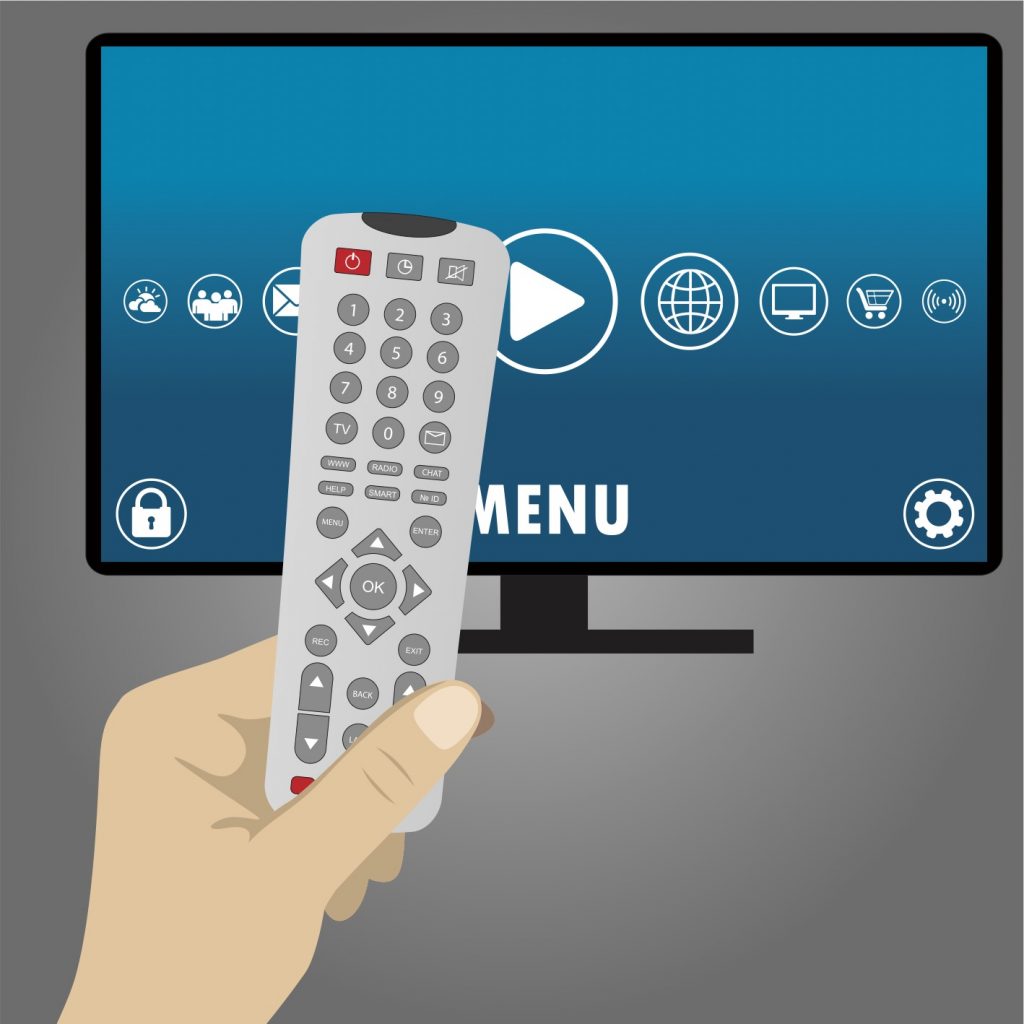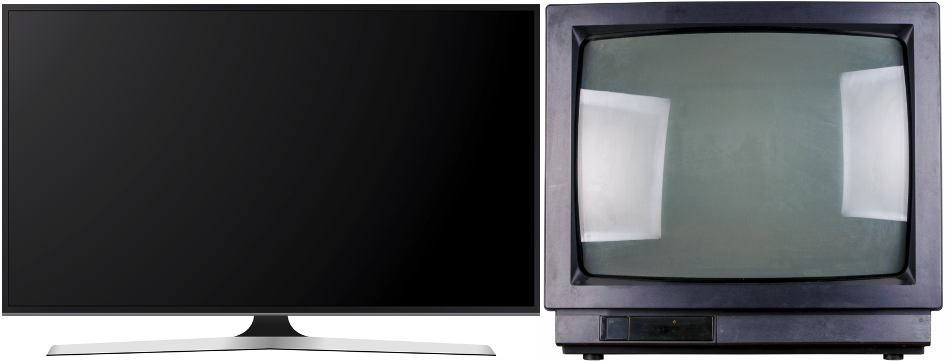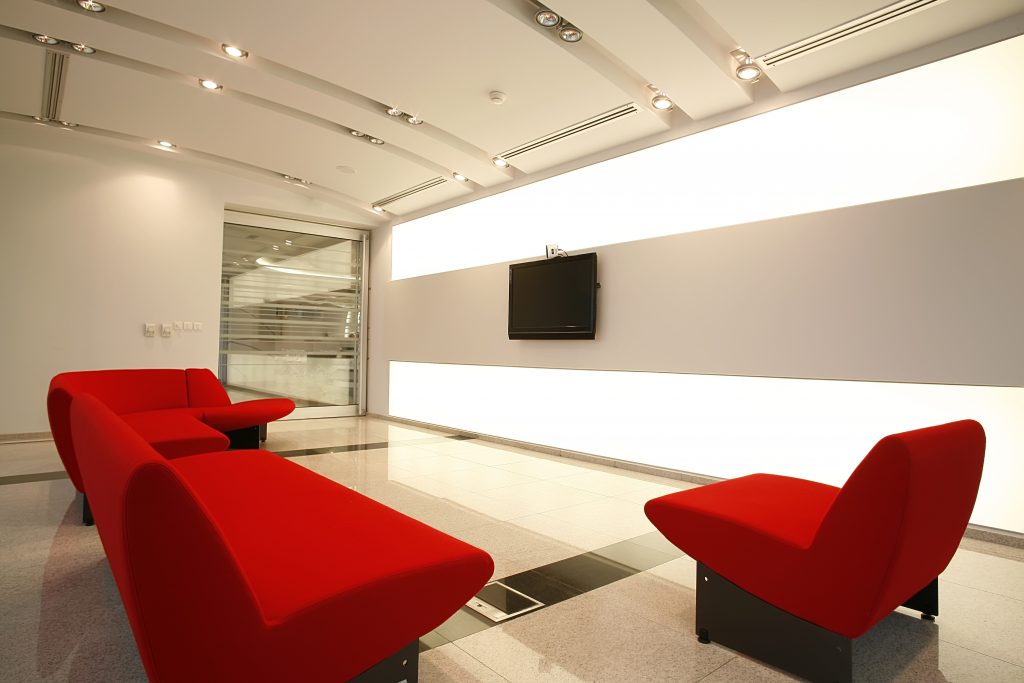Tips for setting up a TV for waiting room TV and digital signage service to maximise impact and minimise the cost and effort.
Ensure it is located to maximise the viewing of your intended audience. If it is for customers/patients/clients make sure it is located where they can see rather than where staff can (and vice versa if it is for staff). Select an appropriate bracket type and location where it will not cause a health and safety risk from people bumping into it.
Ensure that you remove any coaxial arial that is plugged into the TV. If you leave an arial plugged in then you should pay the relevant licence fees for a domestic television (TV, MPLC, PPL, PRS etc).
If you intend for it to playout for a full business day (of 4 hours or more), there are settings on the television or screen that need to be enabled and switched off.

1: Check automatic standby and Eco mode settings are switched OFF
NB: These settings are switched on by manufacturers on new televisions as standard.
To use our automated power on/off functionality
2: Switch ON or enable the HDMI-CEC settings for ALL HDMI inputs. Many manufacturers give the HDMI-CEC services a different name. Here is a list of the names that the most common TV makers use for HDMI-CEC:
LG: SimpLink
Samsung: Anynet+
Sony: BRAVIA Sync or BRAVIA Link
Philips: EasyLink
Toshiba: CE-Link or Regza Link
JVC: HDMI_CEC
Vizio: CEC
Insignia: INlink
Roku: 1-Touch
Additional recommended setting for the television
3: Set the television to turn on through the built-in clock. There are two steps to this:
- Set the date and time on the television
- Enable the On Time for the relevant days
NB: Choose the HDMI 1 input (see point 8 below) for the channel selection.
Which TV manufacturer to choose
Following research of over 5,000 viewers of screens in practice waiting rooms it was discovered that the most important issue was the content mix and make up on screen. It was also uncovered that the make, or manufacturer of the TV had an impact on the viewers perception of the quality of the treatment and service at the practice. Specifically, it was found that:
- Recognised and reputable TV brands such LG, Samsung, Sony etc gave viewers a perception that the practice invested in technology and quality of treatments and services would be good
- Less recognised and supermarket TV brands gave viewers a perception that the practice did not invest in technology and therefore the quality of treatments and services would be negatively impacted and reflect this

If the intent is to market treatments, products or services through the waiting room screens it is advised to ensure the screen is a recognised and reputable TV brand. To ensure your customers perceived impressions of your practice are not being negatively impacted.
Additional benefits of using recognised and reputable TV brands are:
- Firmware and software are likely to be more reliable and kept up to date. Meaning you will be able to use the automation features
- The reliability and screen lifespan are likely to be better
When you consider the relative cost a recognised and reputable TV brand being modest these days (and often way less than a teeth whitening treatment), the small saving a budget screen might offer would clearly be a false economy.
Screen size and format
With each practice and screen location being unique the size really depends upon the environment it is situated. Larger screens are often better for capturing attention and the bigger space the bigger the screen will help viewers see the content and what you are promoting.
It is not recommended to use curved screens for waiting room applications. The viewing angle is significantly impacted (as they are designed for the viewer to be sat directly in front of them). The typical waiting room often have a broad disbursement of viewers so the wider the viewing angle of the screen the better.

TROUBLE SHOOTING TELEVISION
In the event your television turns off when the service is scheduled to run, the likely cause is the automatic standby and Eco mode settings have not been disabled. Some television menus have multiple (often two or three) settings that need to be disabled or switched off. Please see point 1.
NB: the most common default time frame for the ECO/automatic standby is every 4 hours
